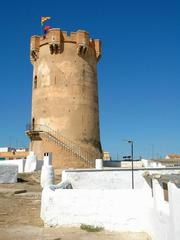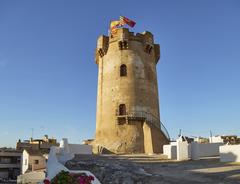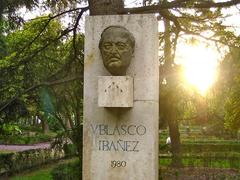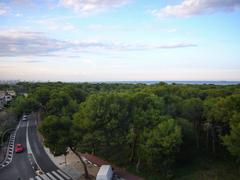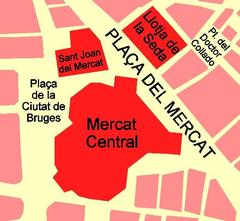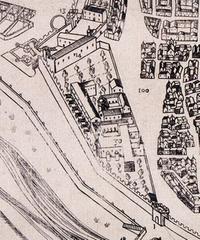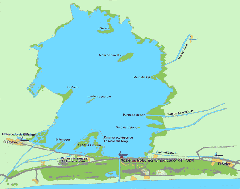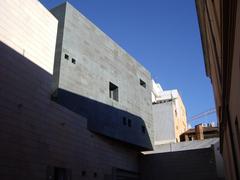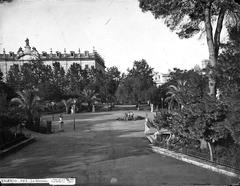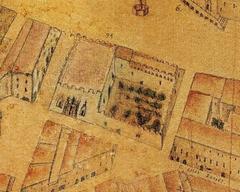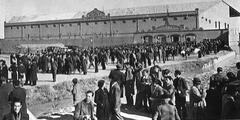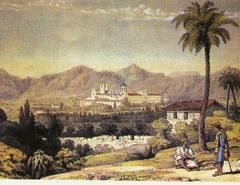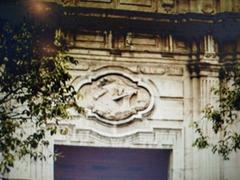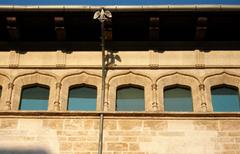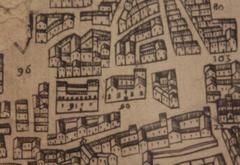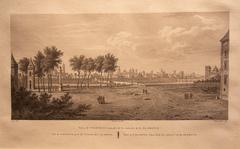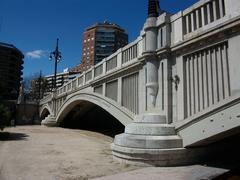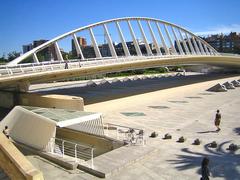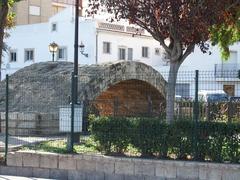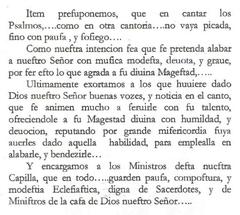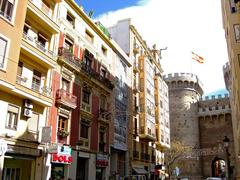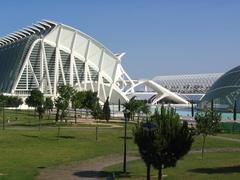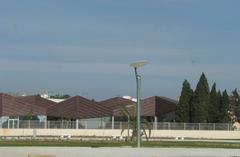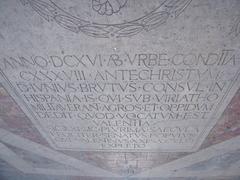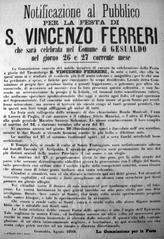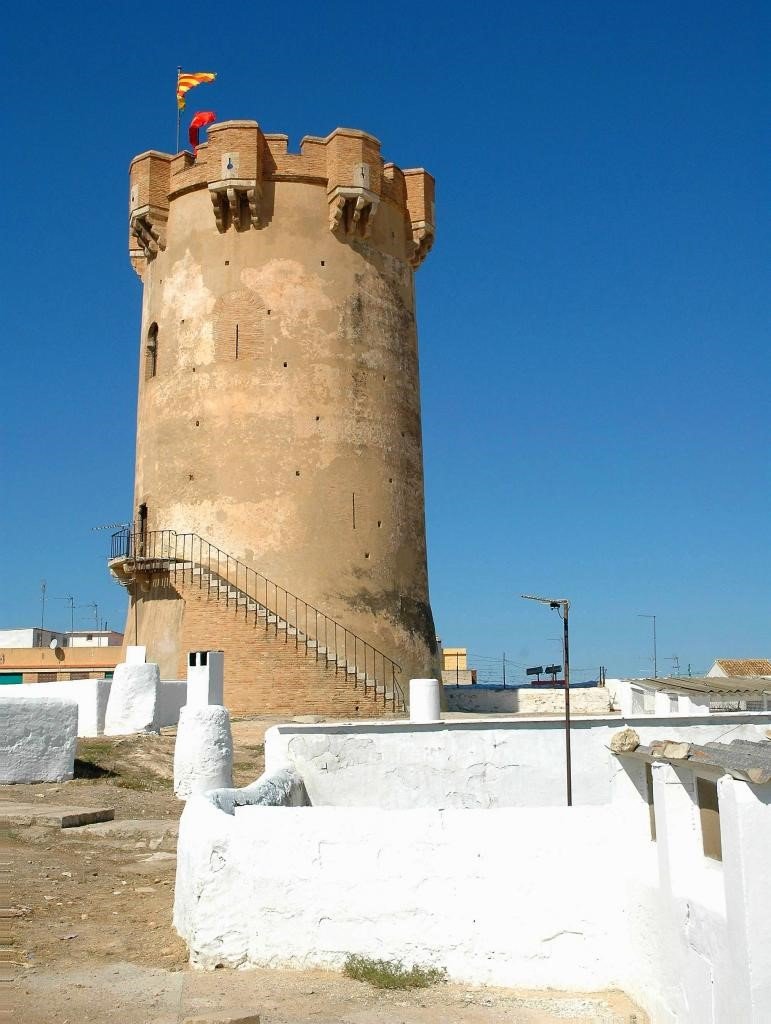
Visiting Hours, Tickets, and Historical Sites at Coves de la Torre, Valencia
Date: 23/07/2024
Introduction
The Coves de la Torre, located in Valencia, Spain, are a treasure trove of historical and cultural significance. These ancient caves offer a journey through time, showcasing human activity spanning from the Paleolithic era to the modern age. The Coves de la Torre have served various purposes throughout history, including shelter for prehistoric humans, storage during the Roman period, and refuge during the Spanish Civil War. This comprehensive guide provides valuable insights into the historical background, visitor information, and practical tips for exploring this fascinating site. Whether you’re a history enthusiast, an adventure seeker, or simply looking for a unique travel experience, the Coves de la Torre have something to offer (Valencia Tourism).
Table of Contents
- [Introduction](#introductionintroduction)
- [Exploring the Coves de la Torre - Historical Insights, Visiting Hours, and Ticket Information](#exploring-the-coves-de-la-torre---historical-insights-visiting-hours-and-ticket-informationexploring-the-coves-de-la-torre---historical-insights-visiting-hours-and-ticket-information)
- [Historical Background](#historical-backgroundhistorical-background)
- [Origins and Early Use](#origins-and-early-useorigins-and-early-use)
- [Roman Influence](#roman-influenceroman-influence)
- [Medieval Period](#medieval-periodmedieval-period)
- [Renaissance and Modern Era](#renaissance-and-modern-erarenaissance-and-modern-era)
- [Archaeological Discoveries](#archaeological-discoveriesarchaeological-discoveries)
- [Visitor Information](#visitor-informationvisitor-information)
- [Visiting Hours and Tickets](#visiting-hours-and-ticketsvisiting-hours-and-tickets)
- [Guided Tours and Special Events](#guided-tours-and-special-eventsguided-tours-and-special-events)
- [Travel Tips and Nearby Attractions](#travel-tips-and-nearby-attractionstravel-tips-and-nearby-attractions)
- [Accessibility](#accessibilityaccessibility)
- [Preservation and Cultural Significance](#preservation-and-cultural-significancepreservation-and-cultural-significance)
- [Educational and Research Opportunities](#educational-and-research-opportunitieseducational-and-research-opportunities)
- [FAQ](#faqfaq)
- [Historical Background](#historical-backgroundhistorical-background)
- [Conclusion](#conclusionconclusion)
- [References](#referencesreferences)
Exploring the Coves de la Torre - Historical Insights, Visiting Hours, and Ticket Information
Historical Background
Origins and Early Use
The Coves de la Torre in Valencia, Spain, have origins dating back to the prehistoric era. Archaeological evidence suggests that these caves were initially used by early human settlers during the Paleolithic period. The caves provided shelter and a strategic vantage point for these early inhabitants, who were primarily hunter-gatherers. Excavations have uncovered stone tools and other artifacts that indicate the presence of human activity as far back as 30,000 years ago (Valencia Tourism).
Roman Influence
During the Roman period, the Coves de la Torre gained significant importance. The Romans expanded and modified the caves for various purposes, utilizing them for storage, particularly for wine and olive oil. The caves’ constant temperature and humidity levels made them ideal for preserving these goods. Additionally, the Romans constructed intricate drainage systems within the caves, showcasing their advanced understanding of engineering and architecture (Roman Engineering).
Medieval Period
In the medieval period, the Coves de la Torre continued to play a crucial role in the local community. The caves were used as refuges during times of conflict, particularly during the Reconquista. The strategic location of the caves provided a safe haven for villagers and their valuables. During this time, the caves were also used for religious purposes, with some sections being converted into chapels and places of worship. Frescoes and religious artifacts from this period have been discovered, indicating the spiritual significance of the caves (Medieval Spain).
Renaissance and Modern Era
The Renaissance period saw a decline in the use of the Coves de la Torre as the region experienced relative peace and stability. However, the caves did not fall into complete disuse. They were occasionally used for storage and as a source of building materials. In the modern era, particularly during the Spanish Civil War (1936-1939), the caves once again served as shelters. Local residents sought refuge in the caves to escape bombings and other wartime dangers. The caves’ robust structure and hidden entrances provided a safe and secure environment during these tumultuous times (Spanish Civil War).
Archaeological Discoveries
Significant archaeological excavations have been conducted at the Coves de la Torre, revealing a wealth of historical artifacts. These excavations have been instrumental in understanding the various phases of human activity in the caves. Notable discoveries include Roman pottery, medieval religious artifacts, and Paleolithic tools. These findings have provided valuable insights into the daily lives, trade practices, and cultural developments of the people who inhabited or utilized the caves over millennia (Archaeological Institute of America).
Visitor Information
Visiting Hours and Tickets
The Coves de la Torre are open to visitors year-round. Visiting hours vary seasonally, so it is advisable to check the official website for the most up-to-date information. Tickets can be purchased online or at the site. Discounts are often available for students, seniors, and groups.
Guided Tours and Special Events
Guided tours are available and highly recommended for those looking to gain deeper insights into the history and significance of the caves. Special events, such as historical reenactments and educational workshops, are frequently held at the site, offering unique experiences for visitors.
Travel Tips and Nearby Attractions
The Coves de la Torre are located a short drive from the city of Valencia. Public transportation options are available, including buses and trains. Nearby attractions include the Turia Gardens, Valencia Cathedral, and the City of Arts and Sciences, making it easy to plan a full day of exploration in the area.
Accessibility
The site is equipped with facilities to accommodate visitors with disabilities, including ramps and accessible pathways. However, some sections of the caves may have uneven terrain, so it is advisable to check accessibility options in advance.
Preservation and Cultural Significance
Today, the Coves de la Torre are recognized as a site of immense cultural and historical significance. Efforts have been made to preserve the caves and their artifacts for future generations. The caves are protected under Spanish heritage laws, and ongoing conservation projects aim to maintain their structural integrity and historical value. The site is also a popular tourist destination, attracting visitors interested in history, archaeology, and natural beauty. Guided tours are available, providing an in-depth look at the caves’ history and significance (Valencia Heritage).
Educational and Research Opportunities
The Coves de la Torre offer numerous opportunities for education and research. Universities and research institutions frequently collaborate on archaeological projects at the site, contributing to the broader understanding of human history in the region. Educational programs and workshops are also conducted, aimed at engaging the public and fostering an appreciation for the historical and cultural heritage of the caves. These initiatives ensure that the Coves de la Torre remain a vibrant and relevant part of Valencia’s cultural landscape (University of Valencia).
FAQ
Q: What are the visiting hours for the Coves de la Torre?
A: Visiting hours vary seasonally, so please check the official website for the most current information.
Q: How much do tickets cost?
A: Ticket prices vary, with discounts available for students, seniors, and groups. Check the official website for detailed pricing.
Q: Are guided tours available?
A: Yes, guided tours are available and highly recommended to gain deeper insights into the site’s history.
Q: Is the site accessible for visitors with disabilities?
A: The site has facilities to accommodate visitors with disabilities, including ramps and accessible pathways. However, some sections may have uneven terrain.
Q: What are some nearby attractions?
A: Nearby attractions include the Turia Gardens, Valencia Cathedral, and the City of Arts and Sciences.
Conclusion
The historical background of the Coves de la Torre is a testament to the enduring significance of this remarkable site. From its origins in the Paleolithic era to its role in modern times, the caves have witnessed and contributed to the rich tapestry of human history in Valencia. The ongoing preservation and study of the Coves de la Torre ensure that this legacy will continue to be appreciated and understood by future generations. Plan your visit today to explore one of Valencia’s most intriguing historical sites.
References
- Valencia Tourism. (n.d.). Retrieved from https://www.visitvalencia.com/en
- Roman Engineering. (n.d.). Retrieved from https://www.ancient.eu/Roman_Engineering/
- Medieval Spain. (n.d.). Retrieved from https://www.medievalists.net/
- Spanish Civil War. (n.d.). Retrieved from https://www.britannica.com/event/Spanish-Civil-War
- Archaeological Institute of America. (n.d.). Retrieved from https://www.archaeological.org/
- Valencia Heritage. (n.d.). Retrieved from https://www.valenciaheritage.com
- University of Valencia. (n.d.). Retrieved from https://www.uv.es
